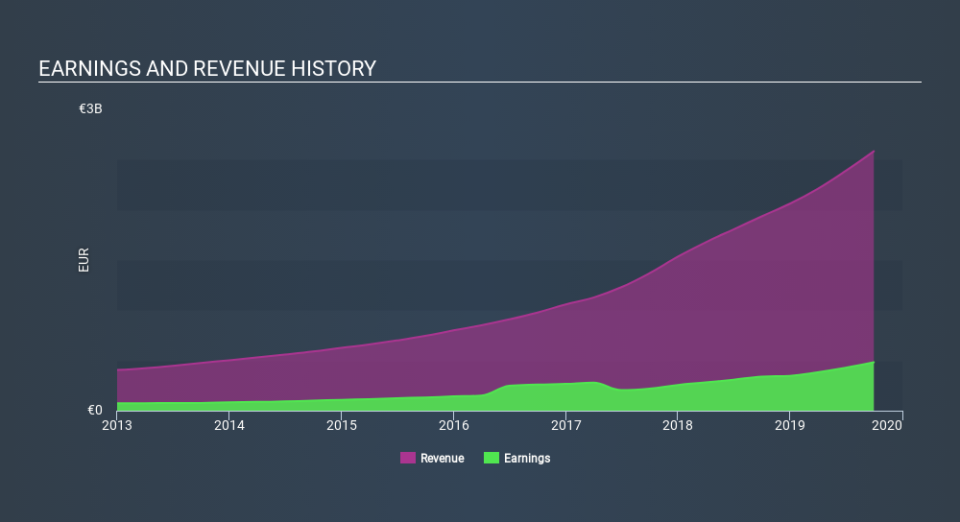Does Wirecard AG's (ETR:WDI) Past Performance Indicate A Stronger Future?

Understanding how Wirecard AG (XTRA:WDI) is performing as a company requires looking at more than just a years' earnings. Today I will run you through a basic sense check to gain perspective on how Wirecard is doing by comparing its latest earnings with its long-term trend as well as the performance of its it industry peers.
Check out our latest analysis for Wirecard
How Well Did WDI Perform?
WDI's trailing twelve-month earnings (from 30 September 2019) of €482m has jumped 42% compared to the previous year.
Furthermore, this one-year growth rate has exceeded its 5-year annual growth average of 27%, indicating the rate at which WDI is growing has accelerated. What's the driver of this growth? Let's see if it is merely a result of industry tailwinds, or if Wirecard has experienced some company-specific growth.
In terms of returns from investment, Wirecard has invested its equity funds well leading to a 21% return on equity (ROE), above the sensible minimum of 20%. Furthermore, its return on assets (ROA) of 7.2% exceeds the DE IT industry of 5.0%, indicating Wirecard has used its assets more efficiently. And finally, its return on capital (ROC), which also accounts for Wirecard’s debt level, has increased over the past 3 years from 12% to 15%.
What does this mean?
While past data is useful, it doesn’t tell the whole story. While Wirecard has a good historical track record with positive growth and profitability, there's no certainty that this will extrapolate into the future. I suggest you continue to research Wirecard to get a better picture of the stock by looking at:
Future Outlook: What are well-informed industry analysts predicting for WDI’s future growth? Take a look at our free research report of analyst consensus for WDI’s outlook.
Financial Health: Are WDI’s operations financially sustainable? Balance sheets can be hard to analyze, which is why we’ve done it for you. Check out our financial health checks here.
Other High-Performing Stocks: Are there other stocks that provide better prospects with proven track records? Explore our free list of these great stocks here.
NB: Figures in this article are calculated using data from the trailing twelve months from 30 September 2019. This may not be consistent with full year annual report figures.
If you spot an error that warrants correction, please contact the editor at editorial-team@simplywallst.com. This article by Simply Wall St is general in nature. It does not constitute a recommendation to buy or sell any stock, and does not take account of your objectives, or your financial situation. Simply Wall St has no position in the stocks mentioned.
We aim to bring you long-term focused research analysis driven by fundamental data. Note that our analysis may not factor in the latest price-sensitive company announcements or qualitative material. Thank you for reading.

 Yahoo Finance
Yahoo Finance 
